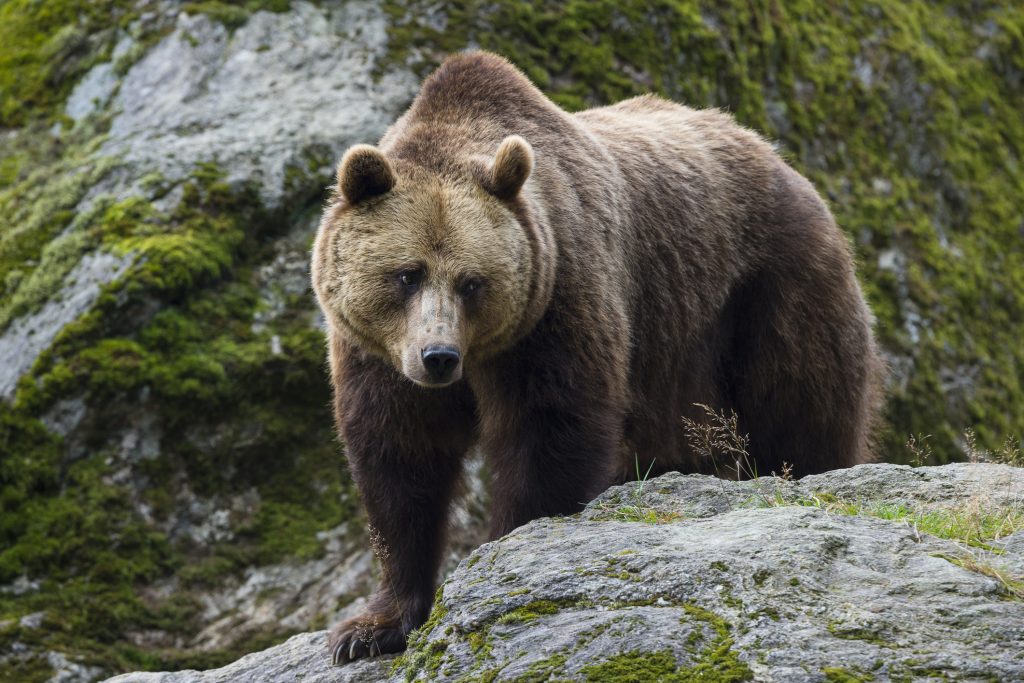Grin and bear it: Fico's plan to slaughter hundreds of Slovak bears faces backlash
For Fico, Slovaks "cannot live in a country where people are afraid to go into the forest and where humans become food for bears.”

BRATISLAVA – Slovakia’s plan to slaughter a quarter of its bear population following a fatal attack on a local man has enraged environmentalists who say the government failed to seriously consider preventative measures.
After a 59-year-old man was mauled to death by a bear a few days ago, the Slovak government approved a proposal to cull 350 bears of the estimated 1,300 brown bears in the country – a plan that is already under review in Brussels.
The case is drawing attention around Europe, as many governments struggle to preserve habitats for bears and wolves, while also ensuring public safety.
The recent fatal attack was not the first. Last year, two people died after being attacked or chased by bears. According to official data, 144 bears were killed in 2024, of which 94 were culled – the most in Slovakia’s history.
To facilitate the issuance of permits for hunters to kill bears, the government also declared a state of emergency in two-thirds of the country.
Environment Minister Tomáš Taraba defended the plan, citing a rise in human-bear encounters – from 650 in 2020 to an estimated 1,900 in 2024.
He was backed by Prime Minister Robert Fico, who declared that Slovaks “cannot live in a country where people are afraid to go into the forest and where humans become food for bears.”
Neglecting prevention
But the government’s plan has already attracted criticism from environmental activists and organisations.
For them, the mass cull is in breach of international obligations and the government is knowingly breaking the law with its emergency declaration that isn’t based on reliable facts on the ground.
One of these international obligations is the EU Habitats Directive, under which the brown bear is a strictly protected species.
Killing the animals is only allowed in exceptional circumstances and only as a last resort.
But critics say Slovakia isn’t following the rules. Ursia, a Slovakian non-profit association, noted that in many locations where bear attacks occurred – including the most recent, fatal one – hunting bait sites were found.
These baits are used by hunters to attract bears to a specific location for easier shooting. However, baiting leads bears to associate humans with food, increasing human-wildlife conflict and disrupting natural behaviours.
“The government stubbornly ignores that Slovakia is estimated to have around 20,000 bait sites, many near residential areas, where roughly 60,000 tons of food are left each year,” said Michal Kiča, a Slovak environmental expert and former state secretary at the environment ministry.
Kiča and opposition liberal MEP Michal Wiezik also criticised the government for failing to educate the public about how to behave in the forest or how to keep bears away from their homes.
They also argued that last year’s record bear cull did not prevent further deaths, and increasing the quota may not help either.
EU on the case
Taraba noted that the emergency plan includes the removal of all bait sites and the establishment of clear guidelines for handling bear encounters. The ministry also said it would submit a report to the European Commission detailing the number of bears to be culled, which would be made public at a later date.
Asked by Euractiv Slovakia whether the planned bear cull was in line with EU rules and whether Bratislava had first exhausted all alternatives, a spokesperson said the Commission was still analysing the country’s declaration and it was too early to comment.
The Commission has nevertheless taken note of the “emergency situation” and the need for urgent intervention on the matter.
“In general, the Slovak authorities are responsible for ensuring that the conditions set in the Habitats Directive are also respected in any emergency intervention,” the spokesperson added.
Inspired by Romania
But Slovakia is following in the steps of Romania, Taraba, who recently met his Romanian counterpart, has said.
Romania is home to an estimated 6,000 and 8,000 brown bears, Europe’s largest population outside Russia.
After a bear killed a 19-year-old tourist last year, Romania doubled its annual bear cull to nearly 500. Romanian lawmakers argued that ‘overpopulation’ had led to more attacks.
In the past 20 years, bears have killed 26 people and seriously injured 274 others.
The issue has regained attention following a recent incident, where a mountain rescuer was seriously injured by a bear last week.
Bear expert Michal Haring told Denník N that mass culling is not officially allowed in Romania either, but the latter reached a deal with the Commission to raise the number of exemptions authorities can grant.
Romania’s decision was also criticised by environmental groups. Their arguments were remarkably similar: the law would solve nothing unless the authorities focused on prevention and intervention, and targeted specific problematic bears.
WWF Romania stressed that the priority should be to keep bears out of towns and villages by improving waste management and discouraging people from feeding wild animals.
This was echoed by the European Commission in its response to Euronews Romania.
While not directly criticising Romania, it noted that “proactive measures should be prioritised to prevent conflicts with bears.”
(cs, de)



